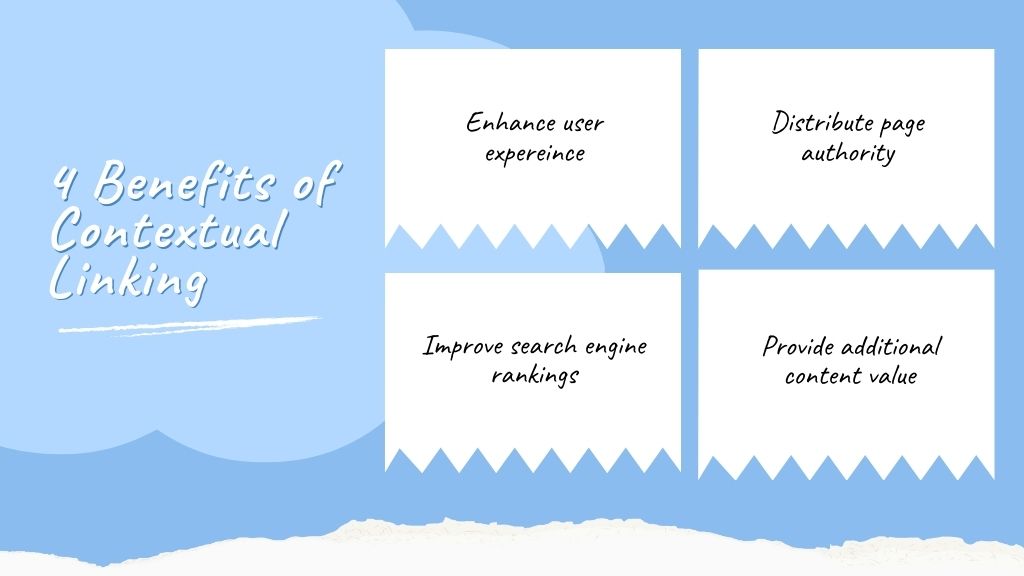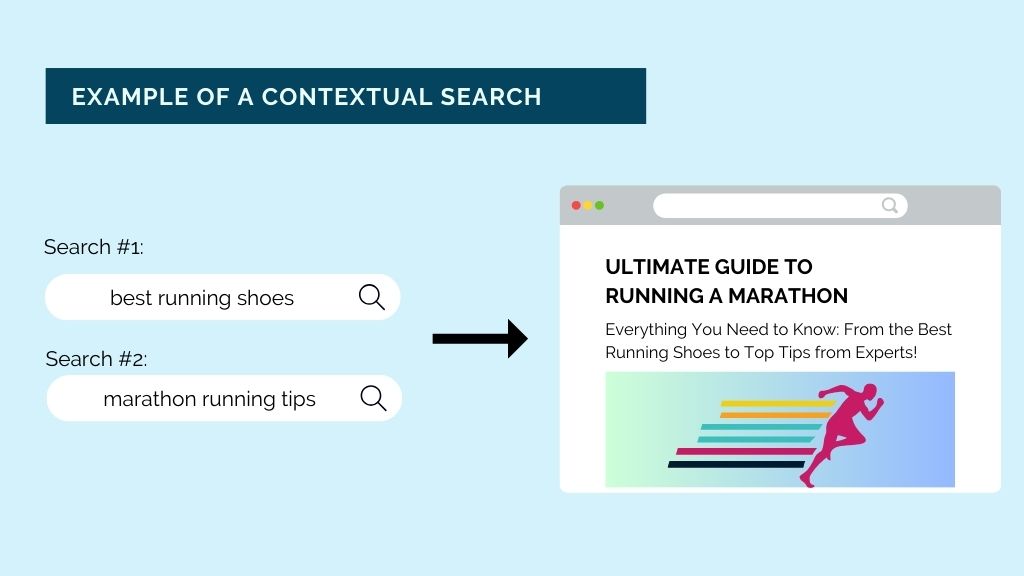Why You Should Master Contextual Linking

Contextual linking involves creating links within your content that point to other relevant pages, either on your own site or to external sources. This blog post will dive into the importance of contextual linking, how it works, and how to effectively implement it in your SEO strategy.
In this article:
- What is a Contextual Link?
- What are the Benefits of Contextual Linking?
- How to Make Contextual Links
- Best Practices for Contextual Links
- What is Contextual Link Building?
What is a Contextual Link?
A contextual link is a hyperlink embedded within the text of your content that directs readers to another relevant webpage. These links are placed within the context of the article, providing additional information or resources related to the topic being discussed. Contextual links are different from navigational links (like menu links) because they are integrated naturally within the content.
Imagine you’re reading an article about the benefits of drinking green tea. A contextual link in this article might take you to another page about the history of green tea or its health benefits.

What are the Benefits of Contextual Linking?
1. Enhances User Experience
Contextual linking improves user experience by providing readers with easy access to related information. When readers find relevant links within the content, they are more likely to stay on your site longer, exploring additional pages. This increased engagement can lead to lower bounce rates and higher time spent on site, both of which are positive signals for search engines.
2. Improves Search Engine Rankings
Search engines like Google use links to discover and rank content. Contextual links are particularly valuable because they help search engines understand the relevance and context of your pages. When you link to related content, you are signaling to search engines that these pages are important and related, which can improve your rankings for relevant keywords.
3. Helps Distribute Page Authority
Internal linking helps distribute page authority (also known as link juice) across your website. When you link to other pages on your site, you pass some of the authority from the linking page to the linked page. This can help improve the rankings of your other pages, making your overall site stronger in the eyes of search engines.
4. Provides Additional Value to Readers
By linking to high-quality, relevant content, you provide additional value to your readers. This can help establish your site as a trustworthy and authoritative source of information. When readers find your content helpful and informative, they are more likely to return to your site and share your content with others.
How to Make Contextual Links
1. Identify Relevant Content
The first step in creating contextual links is to identify relevant content on your site and external sites. Look for pages that are related to the topic you are writing about and that provide additional value to your readers. Use tools like Google Analytics to find your top-performing pages and consider linking to these pages to help boost their authority.
2. Use Descriptive Anchor Text
Anchor text is the clickable text in a hyperlink. For contextual linking to be effective, use descriptive anchor text that clearly indicates what the linked page is about. Avoid using generic phrases like “click here” or “read more.” Instead, use keywords that accurately describe the linked content, such as “organic pest control methods” or “composting tips.”
3. Maintain a Natural Flow
Ensure that your contextual links are naturally integrated into your content. The links should make sense in the context of the surrounding text and provide relevant information that enhances the reader’s understanding of the topic. Avoid overloading your content with links, as this can be distracting and reduce the overall quality of your content.
4. Link to High-Quality Sources
When linking to external content, make sure you choose high-quality, authoritative sources. Linking to reputable sites not only provides value to your readers but also signals to search engines that your content is trustworthy. Avoid linking to low-quality or spammy sites, as this can harm your SEO efforts.
5. Update Your Links Regularly
As your site grows and content changes, it’s important to regularly update your links to ensure they are still relevant and functional. Broken links or outdated information can negatively impact user experience and search engine rankings. Use tools like Google Search Console to identify and fix broken links on your site.

Best Practices for Contextual Links
1. Balance Internal and External Links
While internal links help distribute authority within your site, external links to high-quality sources can also enhance your content’s credibility. Aim for a balance between internal and external links to provide a well-rounded and informative experience for your readers.
2. Avoid Overlinking
Too many links can overwhelm readers and diminish the value of each link. Focus on linking to the most relevant and valuable pages to maintain a clean and effective linking strategy.
3. Monitor Link Performance
Use analytics tools to track the performance of your contextual links. Pay attention to metrics like click-through rates and time spent on linked pages to understand how your links are performing and where you can make improvements.
4. Link Contextually to Multimedia Content
Don’t limit contextual linking to text-based content. Apply the same principles to multimedia content such as videos, infographics, and podcasts. Providing links within these formats can enhance the user experience and improve SEO.
What is Contextual Link Building?
Contextual link building is the process of acquiring backlinks from other websites within relevant, contextually appropriate content. These backlinks are valuable because they come from related content, making them more meaningful and influential for SEO. Contextual link building can involve strategies such as guest posting, creating high-quality content that others want to link to, and collaborating with influencers and industry experts.

What is an Example of a Contextual Backlink?
A contextual backlink is a hyperlink that is placed within the relevant content on another website. For instance, if a food blog writes a recipe post and includes a link to your article about the health benefits of certain ingredients, that link is a contextual backlink. It’s relevant to the content and provides value to readers who want to learn more.

What is an Example of a Contextual Search?
A contextual search refers to search queries that are understood within the context of the user’s environment, behavior, or previous searches. For example, if someone searches for “best running shoes” and later searches for “marathon training tips,” the search engine may prioritize results that relate to both running shoes and marathon training, understanding the user’s interest in running.
How to Use Contextual Targeting
Contextual targeting involves placing ads or content based on the context of the webpage rather than user data. For example, if you sell gardening tools, you might place your ads on websites that feature gardening tips and plant care guides. This ensures that your ads are shown to users who are already interested in related topics, increasing the likelihood of engagement and conversion.
The Power of Contextual Linking
Mastering contextual linking enhances user experience, improves search engine rankings, and helps distribute page authority throughout your site. Let’s boost your contextual linking strategy with Link Genius by streamlining your outreach campaigns, making it easier to build high-quality, relevant links that boost your SEO.
Book a demo today to discover how Link Genius can revolutionize your link-building process and elevate your SEO results.
